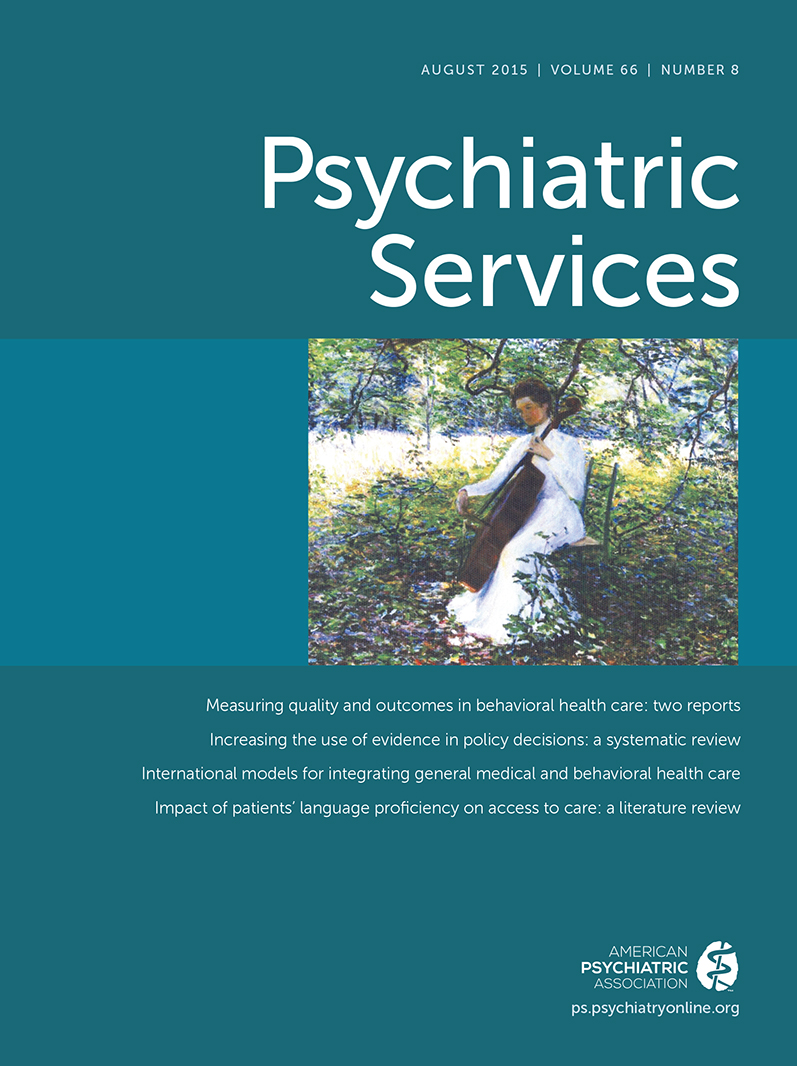Using Evidence to Influence Policy and Improve Practice
Former Surgeon General David Satcher—the first Surgeon General to focus deeply on mental health—often lamented “the gap between what we know and what we do” in mental health care. His complaint resonated with advocates and stakeholders, who know that the quality of care should be better. However, despite the momentum generated by the Surgeon General’s 1999 mental health report, a strong emphasis on closing the science-to-service gap in the 2003 report of the President’s New Freedom Commission on Mental Health, and a few notable exceptions such as the Department of Veterans Affairs campaign to promote evidence-based psychological services, there is little evidence that the gap has closed. Therefore, the thoughtful and competent review by Williamson and colleagues on interventions and strategies to increase the use of evidence to improve mental health policy, which appears in this month’s issue, is salient.
A careful reading of this review and a consideration of the status of the field indicate that we are facing a chasm, not a mere gap. Williamson and colleagues’ literature search returned 2,677 citations, and the authors identified an additional 50 relevant papers by scanning reference lists. After weeding out unpublished articles, studies in which an intervention was not tested, and studies that did not include policy makers as part of the intervention, a total of nine qualifying studies were found! Given the scope and public health impact of the science-to-service gap, this is on the scale of fighting a five-alarm fire with a garden hose.
Is this is a bit melodramatic? After all, there have been many efforts to promote adoption of evidence-based team interventions for individuals with severe mental illness, including robust dissemination efforts in a number of states. In addition, SAMHSA and NIMH have advanced implementation of evidence-informed early intervention programs for people with psychotic illnesses, with a set-aside for such programs in SAMHSA’s mental health block grant. The Johnson and Johnson–Dartmouth Community Mental Health Program has facilitated the implementation of evidence-based (and fidelity-measured) supported employment programs in at least 19 states. And in the area of children’s mental health care, treatment development researchers such as Scott Henggeler, Sonja Schoenwald, and Patricia Chamberlain have devoted significant energies to advancing implementation of interventions with well-established efficacy.
Despite these efforts, evidence-based treatments are available to only a small fraction of individuals who could benefit. For example, despite the well-planned dissemination of supported employment, this effective intervention is available to only about 2% of adults with serious mental illness, according to researcher Gary Bond. The same pattern is evident in regard to the availability of what is perhaps the best-researched intervention model in mental health: collaborative care for common mental disorders in primary care, which has been studied in more than 80 trials. No reliable national data on the spread of collaborative care are available; however, for individuals with common mental disorders in primary care, the availability of this intervention is surely well below 5% of the population that could benefit from the service.
The urgency of efforts to improve dissemination and implementation of proven mental health interventions is hard to overstate, which makes the review by Williamson and colleagues very timely. The problem is exacerbated by very limited federal investments in robust dissemination efforts and (aside from the supported employment effort funded by Johnson and Johnson) by the virtual absence of private philanthropic efforts.
We are now seeing a trend away from care that is provided within mainstream health insurance plans, including in Medicaid where financing responsibility is now concentrated, as opposed to care coordinated by specialty mental health authorities that may have been more attuned to advances in treatment technology. It remains to be seen whether this “policy mainstreaming” will further weaken efforts to implement evidence-based innovations. Attention in health care is also turning toward regulatory and payment strategies to improve quality and reduce errors (such as penalties for hospital readmissions and hospital-acquired infections). Health and Human Services Secretary Burwell recently announced an acceleration of “value-based payment” efforts in Medicare and Medicaid. In this era, the limited scope of our efforts to improve the quality of mental health care by disseminating evidence-based models may create a weak foundation for quality improvement—unless we see a new focus on evidence-based mental health care among the mainstream policy makers and purchasers who increasingly control payment. It is not too late for leadership in this area, but the clock is ticking.



